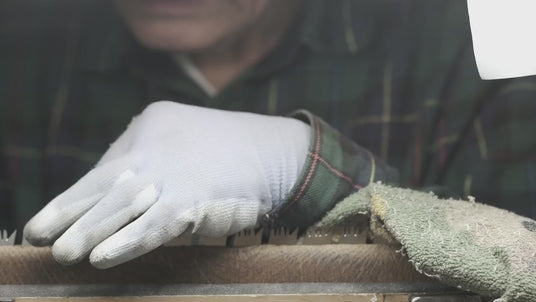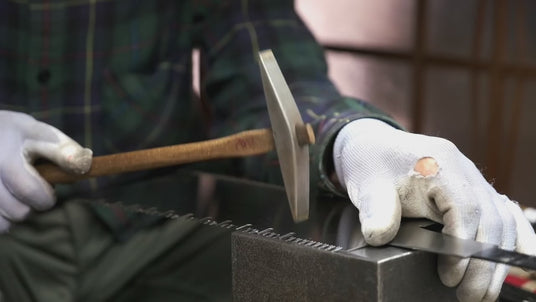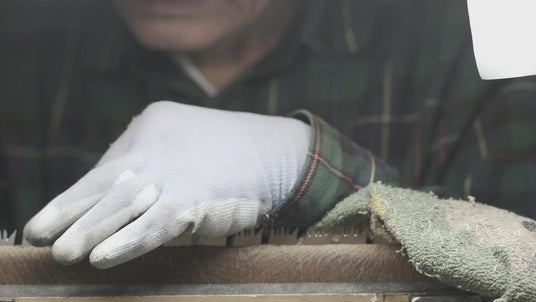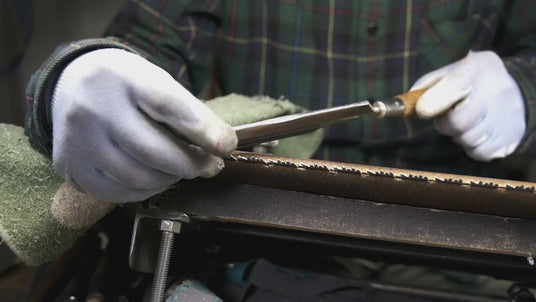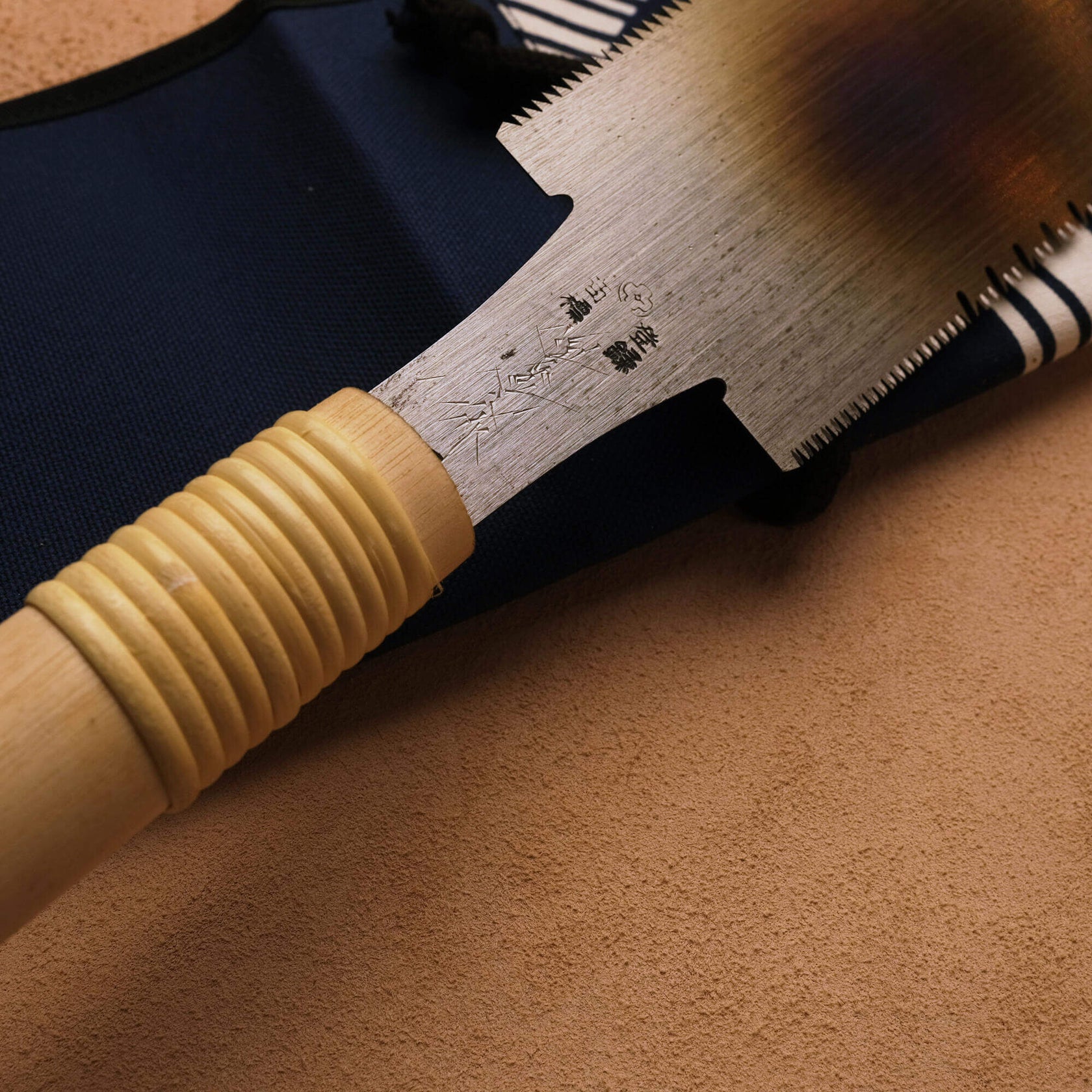What could you achieve if you spent your career focused on one task? If you worked ten hours a day, six days a week, on one craft and one job, how well-honed would your skills be in ten years' time? What about twenty years' time? What about fifty?
Shoichi Nagatsu is a saw sharpener based in Kyoto. He sharpens and tunes new and used saws. That is his trade, profession and obsession. And his work is absolutely breathtaking.
There are many rules around Japanese toolmaking and woodworking - however, when you reach the level of mastery that Nagatsu-san has attained, rules become mere suggestions.
We are very happy to own a Japanese ryoba saw that Nagatsu-san has filed push-teeth into. We have heard of him filing Japanese pull-style teeth into a vintage Disston saw plate.
And we have seen him, first hand and up close, instantly improve the performance of a saw just by tapping along it's blade. He didn't touch the teeth - just the middle of the plate. The result was utterly transformative for the saw, and equally humbling for it's user. How did he do that?
The saws that are sharpened under the Nagakatsu brand - Nagatsu's maker's mark - distill the brilliance, the beauty, and the challenges that make Japanese toolmaking so astounding. In the following words, let us break it down for you.
We have now received three seperate shipments of Nagatsu-san's work over a period of two years. Not that you would know it - this is the first time we have made them live on our website. Previously we were only able to bring in limited numbers of these special saws, which we sold one by one from our Kogarah workshop or guarded jealously in sturdy boxes.
Nagatsu-san has, however, generously allocated us a double-digit number of saws in our most recent shipment, and so we are now offering them for sale here. Even then, there are caveats. Nagatsu buys the raw saw plates from his preferred suppliers before adding his teeth, and these particular plates have been waiting since the late 80s to be filed, set and honed. They are the last of that stash of saw plates, and so neither JTA, nor anyone else, will be able to restock these exact saws.
In this shipment we chose just two kinds of saw - a ryoba model, and a kataba model. Both are 240mm long. We anticipate a shipment of spined Dozukis in the future, however, as the saw plates are yet to be manufactured, we do not have a lead time.
So, what does Nagatsu-san do that makes his saws so special? The quick answer is that he sets the teeth, files them, and peens the plate. But such a quick explanation does a gross injustice to the time and skill that is invested into each one.

